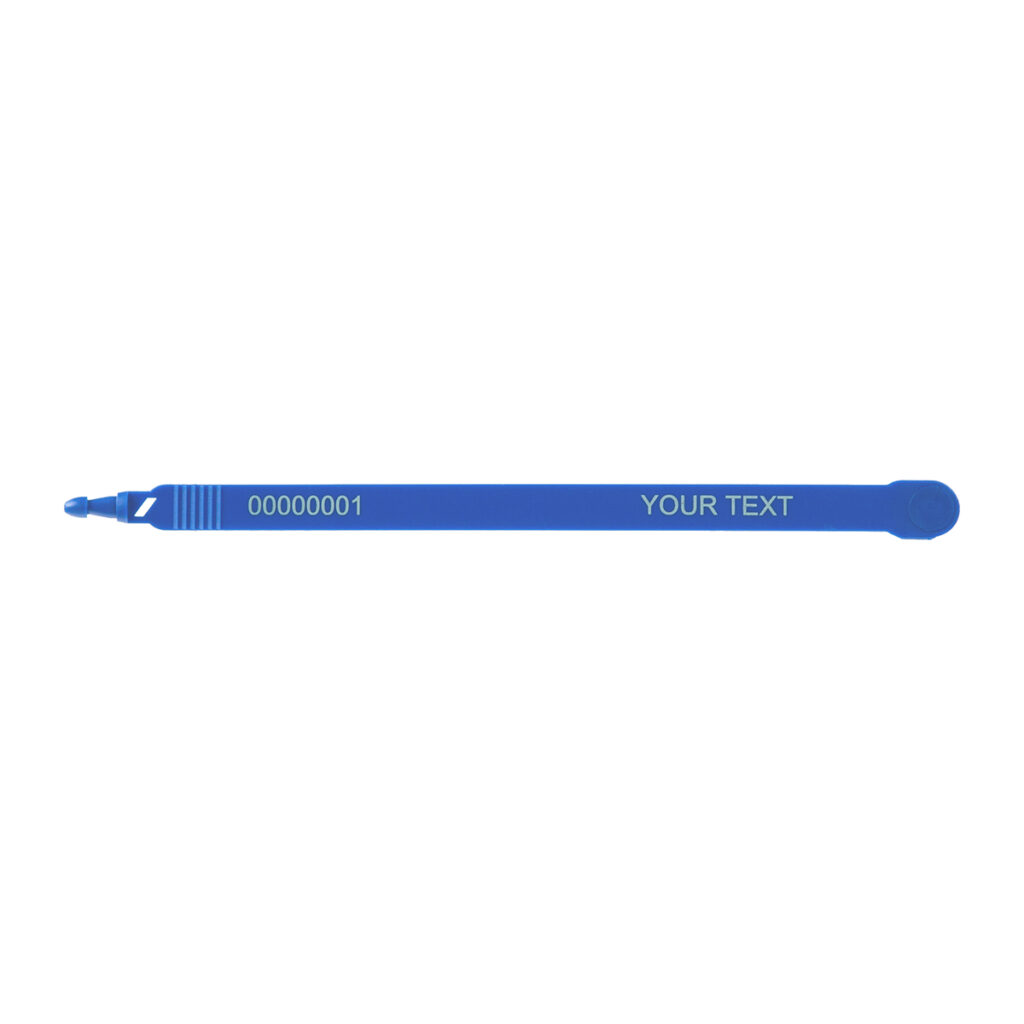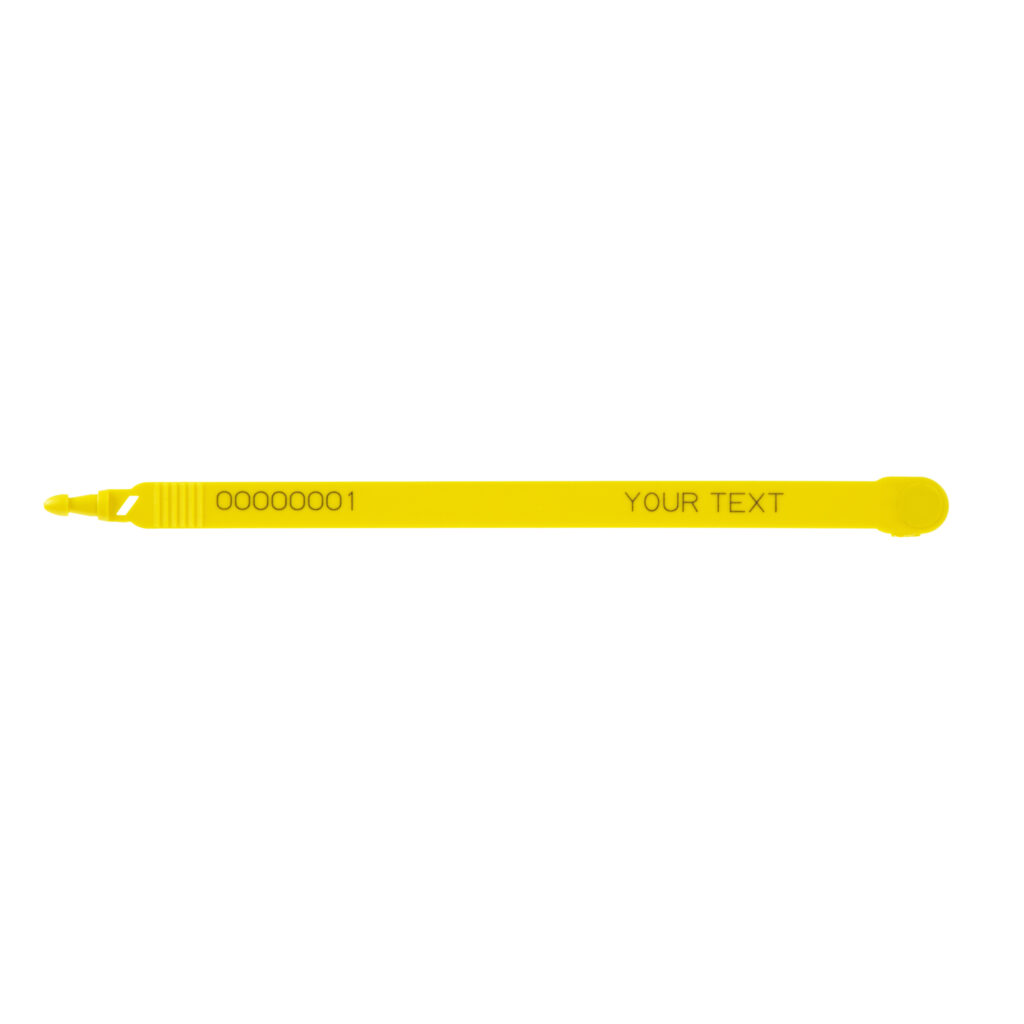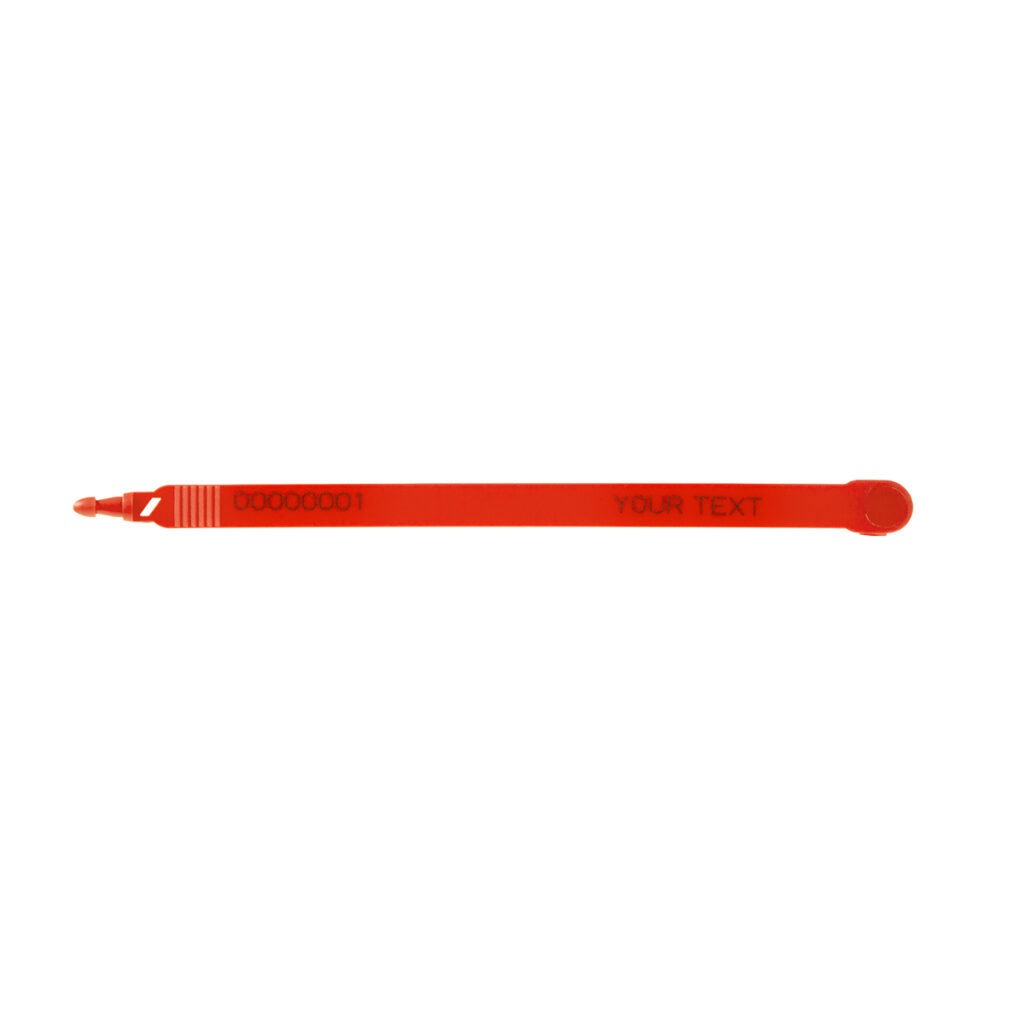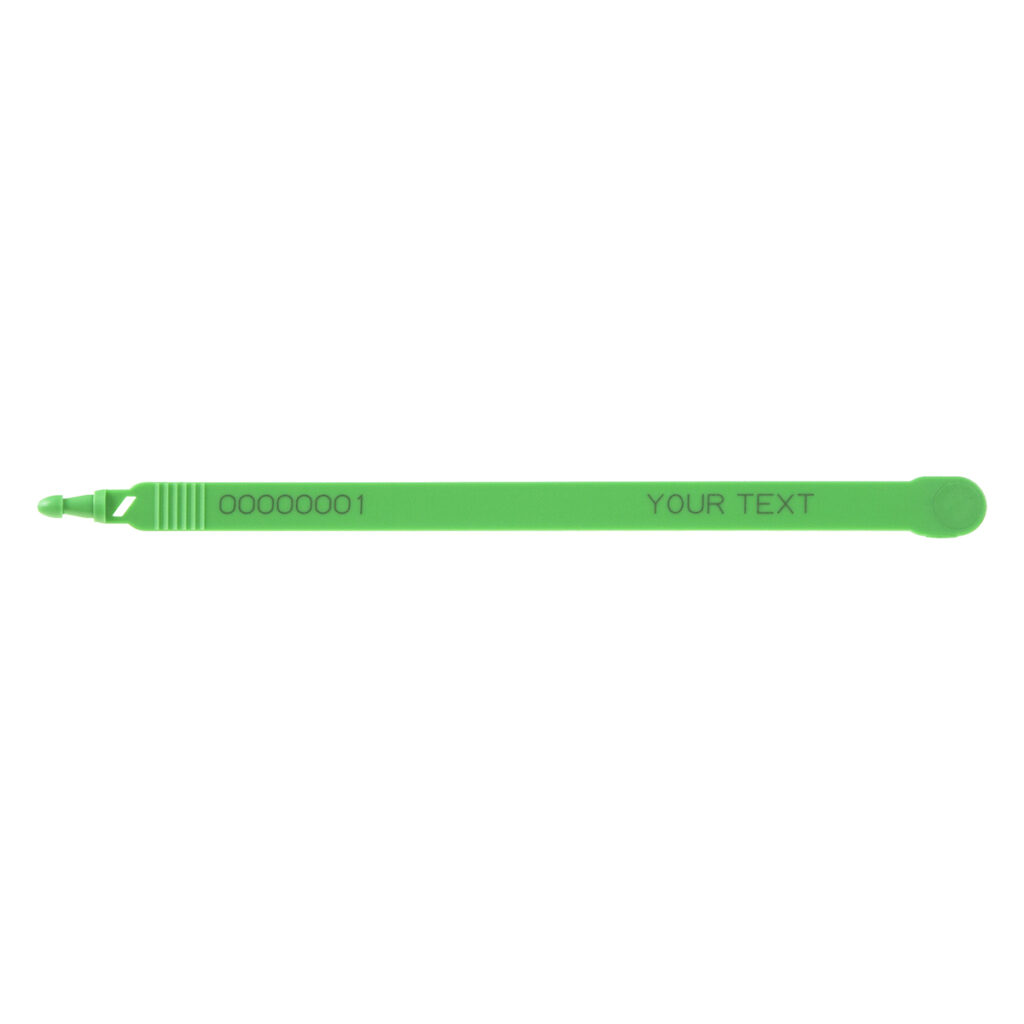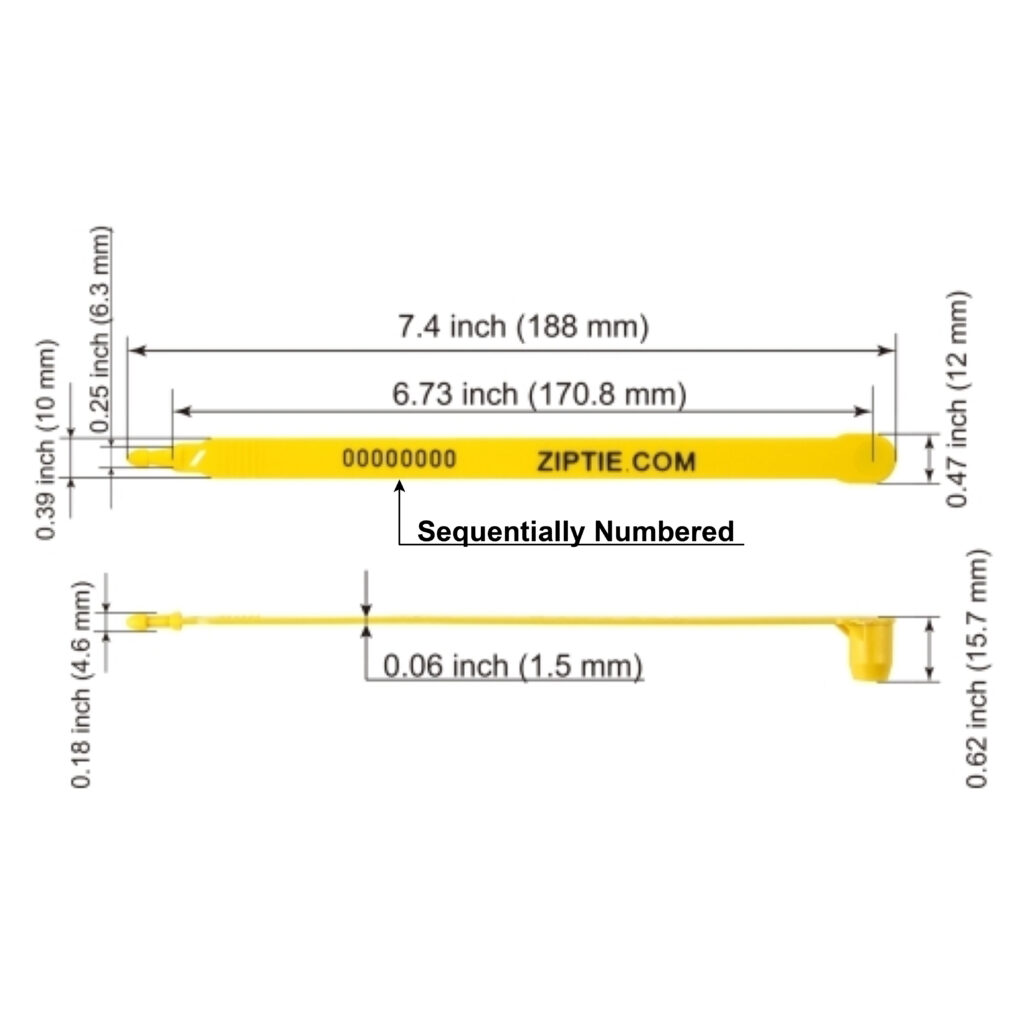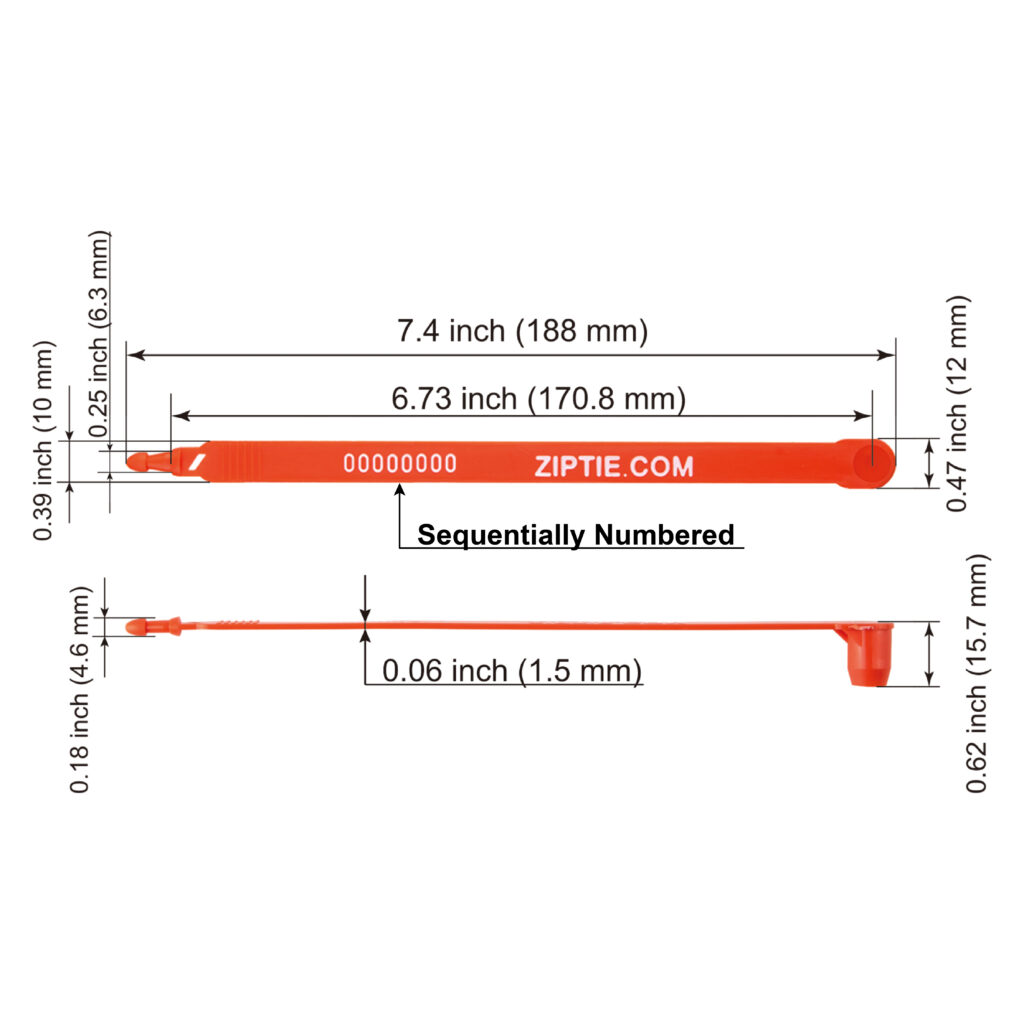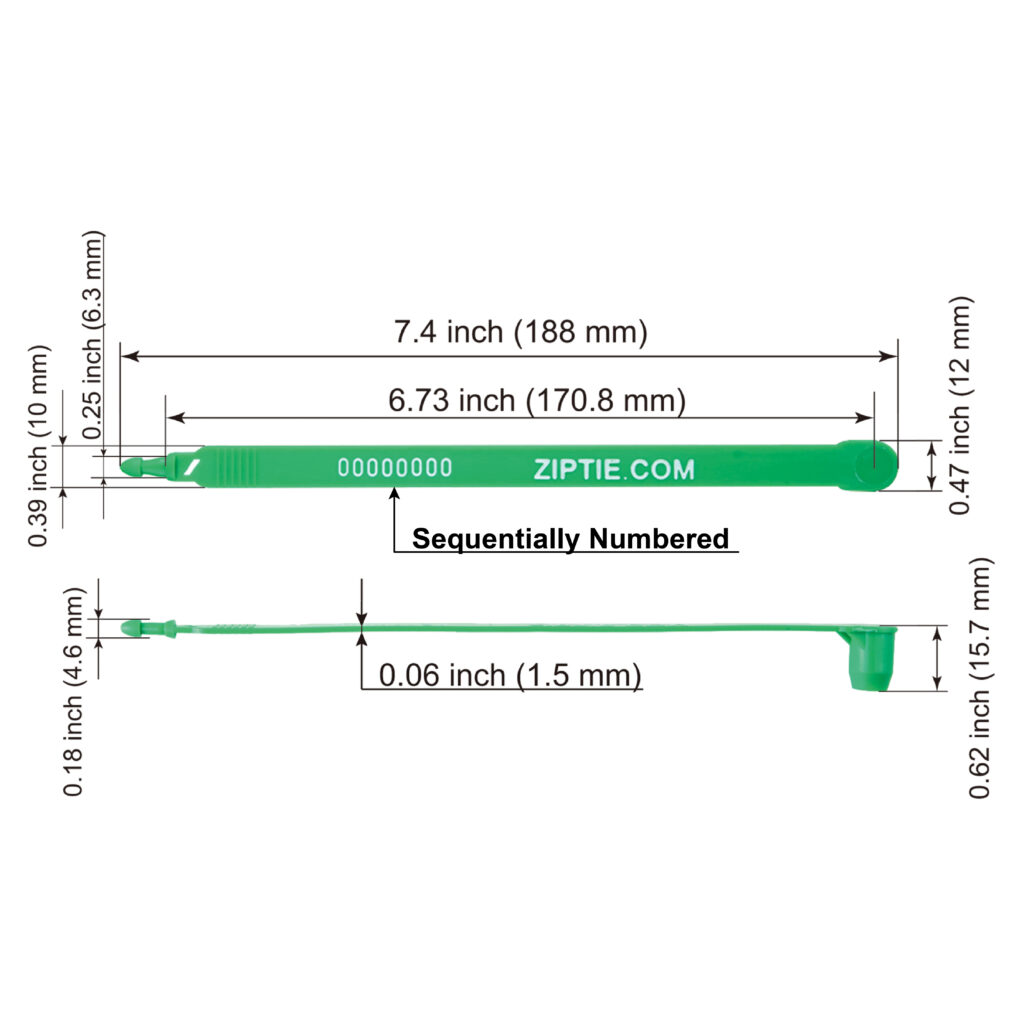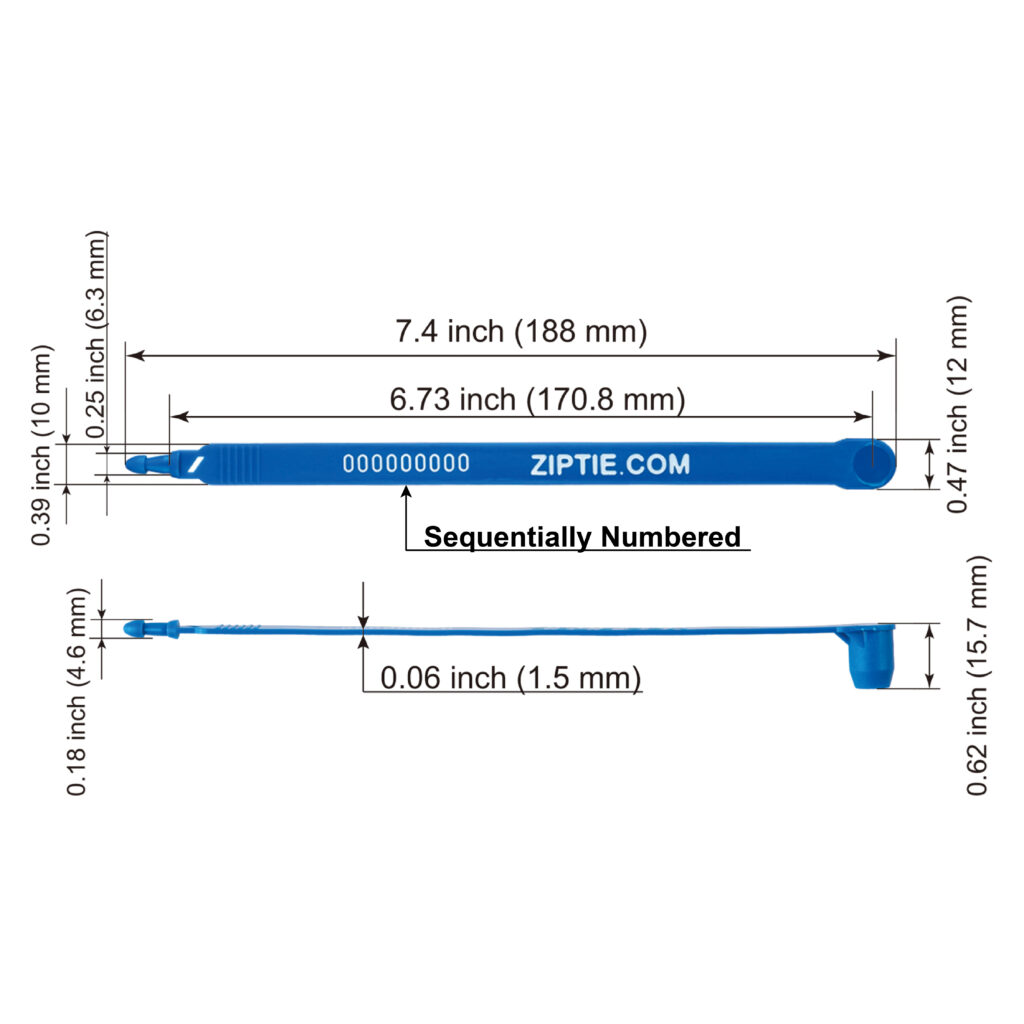Browse Security Seals
24–48 hrs
Length
Color
Width
Showing all 8 results
Blue Plastic Truck Seal (Custom)
SKU:650102
In Stock
Next Day Air Available
| Seal Type | Custom |
|---|---|
| Tensile | 60-lb |
| Length | 7 1/2" |
| Width | 3/8" |
| Color | Blue |
| Pack QTY (Each) | 2000 |
| Case Qty | 1 |
| # Pieces | Savings | $/ Piece |
|---|---|---|
| 1 to 3999 | -- | 0.11 |
| 4000 to 7999 | 18% | 0.09 |
| 8000 to 9999 | 36% | 0.07 |
| 10000+ | 45% | 0.06 |
Yellow Plastic Truck Seal (Custom)
SKU:650104
In Stock
Next Day Air Available
| Seal Type | Custom |
|---|---|
| Tensile | 60-lb |
| Length | 7 1/2" |
| Width | 3/8" |
| Color | Yellow |
| Pack QTY (Each) | 2000 |
| # Pieces | Savings | $/ Piece |
|---|---|---|
| 1 to 3999 | -- | 0.11 |
| 4000 to 7999 | 18% | 0.09 |
| 8000 to 9999 | 36% | 0.07 |
| 10000+ | 45% | 0.06 |
Red Plastic Truck Seal – Custom
SKU:650101
In Stock
Next Day Air Available
| Seal Type | Custom |
|---|---|
| Tensile | 60-lb |
| Length | 7 1/2" |
| Width | 3/8" |
| Color | Red |
| Case Qty | 2000 |
| # Pieces | Savings | $/ Piece |
|---|---|---|
| 1 to 3999 | -- | 0.11 |
| 4000 to 7999 | 18% | 0.09 |
| 8000 to 9999 | 36% | 0.07 |
| 10000+ | 45% | 0.06 |
Green Plastic Truck Seal (Custom)
SKU:650103
In Stock
Next Day Air Available
| Seal Type | Custom |
|---|---|
| Tensile | 60-lb |
| Length | 7 1/2" |
| Width | 3/8" |
| Color | Green |
| Pack QTY (Each) | 2000 |
| # Pieces | Savings | $/ Piece |
|---|---|---|
| 1 to 3999 | -- | 0.11 |
| 4000 to 7999 | 18% | 0.09 |
| 8000 to 9999 | 36% | 0.07 |
| 10000+ | 45% | 0.06 |
Yellow Plastic Truck Seal (Stock)
SKU:640104
In Stock
Next Day Air Available
| Seal Type | Stock |
|---|---|
| Tensile | 60-lb |
| Length | 7 1/2" |
| Width | 3/8" |
| Color | Yellow |
| Pack QTY (Each) | 100 |
| Bundle Diameter | 2.25-in |
| # Pieces | Savings | $/ Piece |
|---|---|---|
| 1 to 1999 | -- | 0.12 |
| 2000+ | 25% | 0.09 |
Red Plastic Truck Seal – (Stock)
SKU:640101
In Stock
Next Day Air Available
| Seal Type | Stock |
|---|---|
| Tensile | 60-lb |
| Length | 7 1/2" |
| Width | 3/8" |
| Color | Red |
| Pack QTY (Each) | 100 |
| Bundle Diameter | 2.25-in |
| # Pieces | Savings | $/ Piece |
|---|---|---|
| 1 to 1999 | -- | 0.12 |
| 2000+ | 25% | 0.09 |
Green Plastic Truck Seal (Stock)
SKU:640103
In Stock
Next Day Air Available
| Seal Type | Stock |
|---|---|
| Tensile | 60-lb |
| Length | 7 1/2" |
| Width | 3/8" |
| Color | Green |
| Pack QTY (Each) | 100 |
| Bundle Diameter | 2.25-in |
| Price |
|---|
| $0.12 $0.06 |
Blue Plastic Truck Seal (Stock)
SKU:640102
In Stock
Next Day Air Available
| Seal Type | Stock |
|---|---|
| Tensile | 60-lb |
| Length | 7 1/2" |
| Width | 3/8" |
| Color | Blue |
| Pack QTY (Each) | 100 |
| Bundle Diameter | 2.25-in |
| Price |
|---|
| $0.12 |
